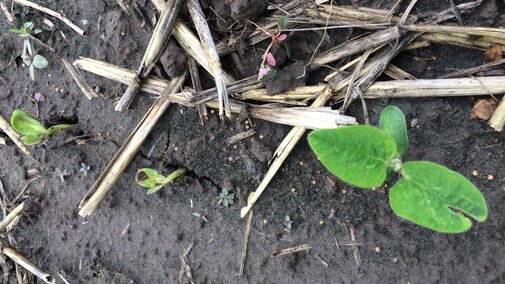
Figure 1. Soybean seedlings showing poor vigor (top) from Rhizoctonia infection in the field in 2017.
Soilborne pathogens and early seedling diseases may be more frequent in corn and soybean this year due to cool weather conditions this spring and delayed planting. The USDA’s National Agricultural Statistics Service reported that 17% of corn and 6% of soybean were planted in Nebraska by April 29. Last year 32% of corn and 7% of soybean had been planted by this time.
Cold temperatures and adequate moisture favor growth and development of seedling pathogens, such as Rhizoctonia and Fusarium. In areas with higher moisture and saturated soil, other soilborne pathogens such as Pythium and Phytophthora will be favored.
Conditions this spring will allow pathogens to build up populations and disease may be more severe if favorable conditions continue. With delayed planting, there is greater chance for infection to occur and seedlings may be more susceptible or vulnerable to infection at early stages from soilborne pathogens.
Seeds that become infected may be unable to germinate or emerge. Those that can emerge may develop seedlings that are stunted. Root tips, which play important roles in nutrient and water uptake, may be attacked and killed. This year, we can expect to see more damping-off, root rot, stunting, seedling blight, poor stand establishment, and poor seedling vigor (Figure 1). This may eventually lead to higher yield losses, depending on how long favorable conditions persist.
Management
By the time symptoms of soilborne pathogens are seen, there is little to nothing that can be done to control the diseases. However, certain actions may be taken to prevent or reduce the chances of disease occurrence in future crops:
- Plant fungicide-treated seeds.
- Plant resistant varieties.
- Use biological control products/agents.
- Increase field drainage to reduce Phytophthora diseases.
- Rotate crops.
- Integrate multiple disease management strategies for optimal control.

